Challenge
Quiz-summary
0 of 10 questions completed
Questions:
- 1
- 2
- 3
- 4
- 5
- 6
- 7
- 8
- 9
- 10
Information
![]() This is a short 10 question quiz. It will challenge you to answer questions that involve:
This is a short 10 question quiz. It will challenge you to answer questions that involve:
- Transportation trends within the United States of America.
- Transportation trends in The Motor City: Detroit, Michigan.
- Forward-looking transportation developments & associated economic catalysts.
When you have completed, we will inform you of your score, and how you have done relative to others.
Note: There are hints available for each question offering sufficient information to answer correctly.
No points will be deducted should you wish to use the hints:
- To open the hint panel, click or tap the hint button.
- To close the hint panel, click or tap the hint button, again.
Once you have entered your answer, click or tap the check button to check your answer against the key.
Good Luck!
You have already completed the quiz before. Hence you can not start it again.
Quiz is loading...
You must sign in or sign up to start the quiz.
You have to finish following quiz, to start this quiz:
Results
0 of 10 questions answered correctly
Your time:
Time has elapsed
You have reached 0 of 0 points, (0)
| Average score |
|
| Your score |
|
Categories
- Not categorized 0%
-
Congratulations! You have finished the quiz… Please review your results and the whole quiz in its entirely.
| Pos. | Name | Entered on | Points | Result |
|---|---|---|---|---|
| Table is loading | ||||
| No data available | ||||
- 1
- 2
- 3
- 4
- 5
- 6
- 7
- 8
- 9
- 10
- Answered
- Review
-
Question 1 of 10
1. Question
5 pointsHow many total miles do United States drivers log, every year?
 Correct
Correct
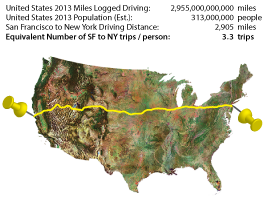
Approximately THREE TRILLION Miles are logged by U.S. drivers every year, on U.S. roads! That’s equal to about 3.3 driving trips from San Francisco to New York, for every man, woman and child alive in the United States, today.
Incorrect

Approximately THREE TRILLION Miles are logged by U.S. drivers every year, on U.S. roads! That’s equal to about 3.3 driving trips from San Francisco to New York, for every man, woman and child alive in the United States, today.
Hint
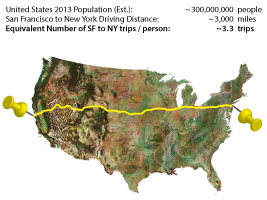
The U.S. population is more than 300,000,000 today. If every man, woman and child were to drive 3,000 miles from coast-to-coast, about 3.3 times, each, that would nearly account for all the driving miles logged in the U.S., in 2012.
- Total miles driven in the U.S.:
- 300,000,000 people
- x 3,000 miles (coast to coast)
- x 3.3 trips
- = ????????????? miles
(note: click the hint button again, to hide this hint & return to the quiz)
-
Question 2 of 10
2. Question
10 points Each calendar year has a total of 8760 hours (365 days * 24 hours). By comparison,
Each calendar year has a total of 8760 hours (365 days * 24 hours). By comparison,- A full-time, 40 hour per week job, will consume at least 2,000 hours of year.
(A full-time employee clocks 40 hours / week over 50 work-weeks, totaling about 2,000 hours.) - Americans will spend nearly 2,800 hours sleeping, each year.
(On average, we sleep about 7.6 hours a day * 365 days = 2,776 hours sleeping)
Of the remaining 4,000 hours in the year, how much time does the average American spend driving their car?
Correct
 The average US driver:
The average US driver:- Drives nearly 15,000 miles per year
- Averages about 30 miles per hour
(speed calculated from 1990 U.S. Census Data across 150,000 trips. Average speed = 30.41 mph. Raw data available here) - On average, this means drivers spend roughly 500 hours per year, driving their car. (15,000 miles * 30 miles/hr = 500 hours)
To give you a frame of reference, consider the average 40-hour per week, full-time job.
Over three months, a full-time employee will log about the same number of hours at work, as they will have spent driving their car, by the end of the year!
Incorrect
 The average US driver:
The average US driver:- Drives nearly 15,000 miles per year
- Averages about 30 miles per hour
(speed calculated from 1990 U.S. Census Data across 150,000 trips. Average speed = 30.41 mph. Raw data available here) - On average, this means drivers spend roughly 500 hours per year, driving their car. (15,000 miles * 30 miles/hr = 500 hours)
To give you a frame of reference, consider the average 40-hour per week, full-time job.
Over three months, a full-time employee will log about the same number of hours at work, as they will have spent driving their car, by the end of the year!
Hint
On average, a person will spend about 1.33 hrs a day, or almost 10 hours per week, driving their car!
- To estimate the answer, multiply:
- ~ 10 hours / week, by
- ~ 50 weeks / year
- 10 x 50 = ??? hrs/yr
(note: click the hint button again, to hide this hint & return to the quiz)
- A full-time, 40 hour per week job, will consume at least 2,000 hours of year.
-
Question 3 of 10
3. Question
10 points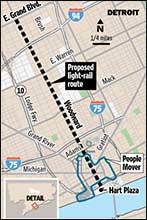 In late 2012, it was announced that sufficient funding has been coordinated, to support the construction of 3.3 miles of light rail in Downtown Detroit. What are the expected costs to build this 3.3-mile stretch, from the Riverfront to the New Center?Correct
In late 2012, it was announced that sufficient funding has been coordinated, to support the construction of 3.3 miles of light rail in Downtown Detroit. What are the expected costs to build this 3.3-mile stretch, from the Riverfront to the New Center?Correct
The M1 Rail initiative is currently forecasted to cost roughly $137 million to build the 3.3-mile stretch of light rail in Detroit. The project is currently expected to be completed in late 2015.
The IRS reimbursement rate for driving expenses is about $0.56/mi. If all 160,000 Detroit Residents who currently have no access to transportation, were driven 6 miles every working day of the year (250 days), the sum total of this reimbursable expense would be equivalent to the projected $137,000,000 cost of building the 3.3 mile light-rail system in Detroit.
Incorrect
The M1 Rail initiative is currently forecasted to cost roughly $137 million to build the 3.3-mile stretch of light rail in Detroit. The project is currently expected to be completed in late 2015.
The IRS reimbursement rate for driving expenses is about $0.56/mi. If all 160,000 Detroit Residents who currently have no access to transportation, were driven 6 miles every working day of the year (250 days), the sum total of this reimbursable expense would be equivalent to the projected $137,000,000 cost of building the 3.3 mile light-rail system in Detroit.
Hint
The projected cost of building the 3.3 mile light-rail system in Detroit will be slightly less than $1000 for each of Detroit’s 160,000 residents without access to transportation.
(note: click the hint button again, to hide this hint & return to the quiz)
-
Question 4 of 10
4. Question
10 pointsHow many people were killed in the United States, in traffic accidents, in 2012?
Correct
 It is currently estimated that about 34,080 people were killed, in the US, in traffic accidents, in 2012. Here are some interesting facts about traffic fatalities in the United States:
It is currently estimated that about 34,080 people were killed, in the US, in traffic accidents, in 2012. Here are some interesting facts about traffic fatalities in the United States:- More people were killed in 2012 U.S. traffic accidents, than in all commercial airline crashes, globally, since 1959. Since 1959, globally, 28,500 people have died in commercial airline crashes.
- Over the past 20 years, alone, the number of people killed in U.S. traffic accidents exceeds the number of combat fatalities across all U.S. military conflicts, since the United States Declaration of Independence, in 1776!
Incorrect
 It is currently estimated that about 34,080 people were killed, in the US, in traffic accidents, in 2012. Here are some interesting facts about traffic fatalities in the United States:
It is currently estimated that about 34,080 people were killed, in the US, in traffic accidents, in 2012. Here are some interesting facts about traffic fatalities in the United States:- More people were killed in 2012 U.S. traffic accidents, than in all commercial airline crashes, globally, since 1959. Since 1959, globally, 28,500 people have died in commercial airline crashes.
- Over the past 20 years, alone, the number of people killed in U.S. traffic accidents exceeds the number of combat fatalities across all U.S. military conflicts, since the United States Declaration of Independence, in 1776!
Hint
 The number of feet above sea-level at which commercial aircraft travel, is about equal to the number of fatalities caused by U.S. traffic accidents, last year.
The number of feet above sea-level at which commercial aircraft travel, is about equal to the number of fatalities caused by U.S. traffic accidents, last year.(note: click the hint button again, to hide this hint & return to the quiz)
-
Question 5 of 10
5. Question
10 points What percentage of Detroit residents have no access to any form of transportation? (No access to transportation means that they don’t own a car, and do not live within walking distance of a scheduled bus or train route)Correct
What percentage of Detroit residents have no access to any form of transportation? (No access to transportation means that they don’t own a car, and do not live within walking distance of a scheduled bus or train route)Correct
Nearly 25% of Detroiters have no access to any form of transportation today. This means that about 160,000 people in Detroit:
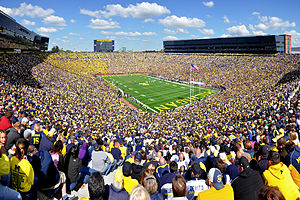
- Are unable to commute to work (most jobs are too far from home)
- Are unable to travel to the store (limited retail exists within Detroit)
- Are unable to travel to, or return from school, without scheduled school bus service
- Are extremely limited in their transportation capability, and cannot go anywhere at all!
To give a bigger-picture perspective, the 25% of Detroit’s population without access to transportation:
- would completely fill 2,000 city buses (far exceeding the city’s existing 449 bus fleet).
- would fill Michigan Stadium about 1.5 times. (Michigan Stadium holds about 110,000 people)
By comparison, Detroit’s estimated 2013 population would fully fill Michigan Stadium about 6 times!
Incorrect
Nearly 25% of Detroiters have no access to any form of transportation today. This means that about 160,000 people in Detroit:

- Are unable to commute to work (most jobs are too far from home)
- Are unable to travel to the store (limited retail exists within Detroit)
- Are unable to travel to, or return from school, without scheduled school bus service
- Are extremely limited in their transportation capability, and cannot go anywhere at all!
To give a bigger-picture perspective, the 25% of Detroit’s population without access to transportation:
- would completely fill 2,000 city buses (far exceeding the city’s existing 449 bus fleet).
- would fill Michigan Stadium about 1.5 times. (Michigan Stadium holds about 110,000 people)
By comparison, Detroit’s estimated 2013 population would fully fill Michigan Stadium about 6 times!
Hint
 Michigan Stadium, holds about 110,000 people.
Michigan Stadium, holds about 110,000 people.- It could be filled about 1.5 times with Detroiters who don’t have access to transportation!
- By comparison, Detroit’s estimated 2013 population fills the stadium completely, about 6 times.
(note: click the hint button again, to hide this hint & return to the quiz)
-
Question 6 of 10
6. Question
5 points What percentage of Detroit’s population, currently without access to transportation, are expected to be served by the M1 Rail project?Correct
What percentage of Detroit’s population, currently without access to transportation, are expected to be served by the M1 Rail project?Correct
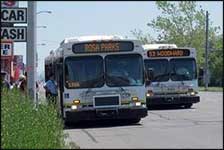 Of the roughly 20,000 residents that live along the Woodward corridor, the reality is that they all have access to the existing bus system already serving this corridor.
Of the roughly 20,000 residents that live along the Woodward corridor, the reality is that they all have access to the existing bus system already serving this corridor.This means that the M1 Light-Rail project effectively serves 0% (zero percent) of Detroit’s 160,000 residents that currently have no access to transportation.
(Note: The M1 Light-Rail objectives, arguably, are more closely connected to the project’s TOD, or transit oriented development potential, and thereby are designed to serve longer-term opportunities.)Incorrect
 Of the roughly 20,000 residents that live along the Woodward corridor, the reality is that they all have access to the existing bus system already serving this corridor.
Of the roughly 20,000 residents that live along the Woodward corridor, the reality is that they all have access to the existing bus system already serving this corridor.This means that the M1 Light-Rail project effectively serves 0% (zero percent) of Detroit’s 160,000 residents that currently have no access to transportation.
(Note: The M1 Light-Rail objectives, arguably, are more closely connected to the project’s TOD, or transit oriented development potential, and thereby are designed to serve longer-term opportunities.)Hint
 Here’s a hint… Consider that current bus service along the Woodward Corridor already exists, as currently provided by the Detroit Department of Transportation (DDOT).
Here’s a hint… Consider that current bus service along the Woodward Corridor already exists, as currently provided by the Detroit Department of Transportation (DDOT).(note: click the hint button again, to hide this hint & return to the quiz)
-
Question 7 of 10
7. Question
15 points How many Detroit full-time jobs are created (for a full-year), when a $50,000 2014 Jeep Grand Cherokee is purchased?Correct
How many Detroit full-time jobs are created (for a full-year), when a $50,000 2014 Jeep Grand Cherokee is purchased?Correct

About 7 FULL-TIME jobs are supported, for a whole year, when a Jeep Grand Cherokee is purchased!
Consider the math:
- The Jeep is designed, engineered & manufactured in Detroit.
- Each Jeep contains about 70% of domestically manufactured parts.
- This means that a $50,000 Jeep contains about $35,000 of parts manufactured in the U.S. & Canada:
- $50,000 (~ cost of new 2014 Jeep)
- x 70% (~ 70% content made in U.S./Canada)
- = $35,000 (value of Jeep actually made in U.S./Canada)
- Light trucks made in Detroit, generate 11 times their purchase price in economic impact. This “economic multiplier” effect explains how each dollar of Jeeps that are made in the U.S., create about $11 of jobs. (Note: U.S. government light truck definition)
- When $35,000 of light truck content is applied to an 11x (11 times) economic multiplier, we are able to see the full-picture economic impact:
- $35,000 (U.S./Canadian Content)
- x 11 (Economic Multiplier)
- = $385,000 (Total Economic Impact)
- The Bureau of Labor Statistics asserts that the average automotive industry employee earns about $50,000/year.
- This means that $385,000 worth of economic activity amounts to more than SEVEN FULL-TIME jobs in Detroit!
- $385,000 (Total Economic Impact)
- ÷ $50,000 (Average Auto Industry Salary)
- = 7.7 jobs (full-time jobs created by economic impact)
Incorrect

About 7 FULL-TIME jobs are supported, for a whole year, when a Jeep Grand Cherokee is purchased!
Consider the math:
- The Jeep is designed, engineered & manufactured in Detroit.
- Each Jeep contains about 70% of domestically manufactured parts.
- This means that a $50,000 Jeep contains about $35,000 of parts manufactured in the U.S. & Canada:
- $50,000 (~ cost of new 2014 Jeep)
- x 70% (~ 70% content made in U.S./Canada)
- = $35,000 (value of Jeep actually made in U.S./Canada)
- Light trucks made in Detroit, generate 11 times their purchase price in economic impact. This “economic multiplier” effect explains how each dollar of Jeeps that are made in the U.S., create about $11 of jobs. (Note: U.S. government light truck definition)
- When $35,000 of light truck content is applied to an 11x (11 times) economic multiplier, we are able to see the full-picture economic impact:
- $35,000 (U.S./Canadian Content)
- x 11 (Economic Multiplier)
- = $385,000 (Total Economic Impact)
- The Bureau of Labor Statistics asserts that the average automotive industry employee earns about $50,000/year.
- This means that $385,000 worth of economic activity amounts to more than SEVEN FULL-TIME jobs in Detroit!
- $385,000 (Total Economic Impact)
- ÷ $50,000 (Average Auto Industry Salary)
- = 7.7 jobs (full-time jobs created by economic impact)
Hint

Light trucks made in Detroit, generate 11 times their purchase price in economic impact. (Note: Gov light truck definition)
- This “economic multiplier” explains how $1 of Jeeps made in the U.S., creates about $11 of jobs.
- $35,000 of domestic light-truck content drives an 11x (11 times) economic multiplier:
- $35,000 (U.S./Canadian Content)
- x 11 (Economic Multiplier)
- = $385,000 (Total Economic Impact)
- According to the Bureau of Labor Statistics the average auto industry employee earns ~ $50,000/yr.
To determine the number of full-time jobs, divide the economic impact ($385,000) by the avg. salary ($50,000) :
- $385,000 ÷ $50,000 = ??
(note: click the hint button again, to hide this hint & return to the quiz)
-
Question 8 of 10
8. Question
5 pointsGoogle announced on the front page of the New York Times (October 10, 2010) that they had partnered with Toyota and Audi to develop a self-driving car. Since that report
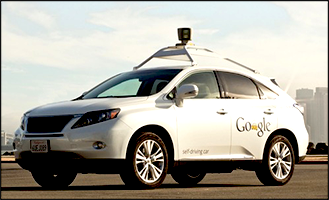 there has been a great deal of momentum building surrounding self-driving cars. Based upon what you have heard, when do you reasonably think that these self-driving cars may be available for use or purchase, in the United States?Correct
there has been a great deal of momentum building surrounding self-driving cars. Based upon what you have heard, when do you reasonably think that these self-driving cars may be available for use or purchase, in the United States?Correct
In September of 2012, Google Co-Founder, Sergey Brin, indicated that he felt self-driving cars would be available within 5 years. At the moment, however, there continues to be a healthy amount of debate surrounding not only when they will emerge as commercial products or service offerings, but also what to call them. Some names for vehicles that manage their own navigation without human intervention, are:
- self-driving vehicles
- driverless vehicles
- autonomous vehicles
- robot cars
The industry’s optimists, like Sergey Brin, are indicating that these vehicles will become available within 5 years. For a more balanced perspective, consider some of the following varying industry reports, surrounding self-driving cars:
Incorrect
In September of 2012, Google Co-Founder, Sergey Brin, indicated that he felt self-driving cars would be available within 5 years. At the moment, however, there continues to be a healthy amount of debate surrounding not only when they will emerge as commercial products or service offerings, but also what to call them. Some names for vehicles that manage their own navigation without human intervention, are:
- self-driving vehicles
- driverless vehicles
- autonomous vehicles
- robot cars
The industry’s optimists, like Sergey Brin, are indicating that these vehicles will become available within 5 years. For a more balanced perspective, consider some of the following varying industry reports, surrounding self-driving cars:
Hint
 In September of 2012, Google Co-Founder, Sergey Brin, indicated he felt self-driving cars would be available within five years.
In September of 2012, Google Co-Founder, Sergey Brin, indicated he felt self-driving cars would be available within five years.(note: click the hint button again, to hide this hint & return to the quiz)
-
Question 9 of 10
9. Question
20 points Uber, is a hot, new on-demand transportation service provider. They have raised millions in Silicon Valley Venture Capital, and have launched their services globally in over 30 cities, including Detroit. A proposed round of funding would value the company at over $3 Billion. Using your smartphone, you schedule or reserve a car, from Uber, and the intelligent routing system ensures that the closest available car gets to you in the shortest possible time.
Uber, is a hot, new on-demand transportation service provider. They have raised millions in Silicon Valley Venture Capital, and have launched their services globally in over 30 cities, including Detroit. A proposed round of funding would value the company at over $3 Billion. Using your smartphone, you schedule or reserve a car, from Uber, and the intelligent routing system ensures that the closest available car gets to you in the shortest possible time.Take a moment to consider the (merely speculative) idea of a partnership between Uber, and the Google self-driving car initiative. If $150 Million were to be spent on a fleet of these self-driving, on-demand, automated, rapid-taxis, how many could expect to purchase at today’s cost of technology?
Correct
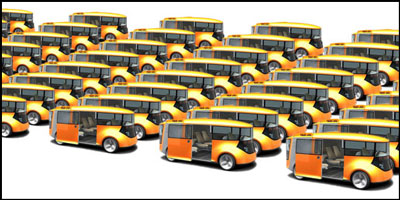 Google recently disclosed the costs of equipping their prototype self-driving vehicles with the necessary technology. About $150,000 of equipment (at today’s pre-production costs) is necessary for the car to operate itself.
Google recently disclosed the costs of equipping their prototype self-driving vehicles with the necessary technology. About $150,000 of equipment (at today’s pre-production costs) is necessary for the car to operate itself.If a total-vehicle cost were estimated to be $200,000, about 750 automated, self-driving, rapid-taxis could be ordered, on-demand and serve our city’s population!
- $150,000,000 (proposed investment)
- ÷ $200,000 (estimated cost per vehicle)
- = 750 self-driving vehicles
Should these vehicles be designed, manufactured and built in Detroit, as well, it would mean as many as 5,775 full-time jobs would be created simply as a result of filling the fleet-order!
Full-time jobs calculation estimate:
- Estimated vehicle cost:
- $150,000: Google’s vehicle-technology costs
- + $50,000: Estimated vehicle platform cost:
- = $200,000 total vehicle cost
- Number of vehicles financed
- $150,000,000 proposed financing
- ÷ $200,000: estimated cost / vehicle
- = 750 total vehicles financed
- Economic Impact Estimate / Vehicle:
- $50,000 base vehicle cost (estimated $150,000/vehicle contracted to Google)
- x 70% (percent of each $50,000 vehicle made in U.S./Canada)
- x 11 (anticipated light-truck industry economic multiplier)
- ÷ 50,000/yr (auto industry average annual salary)
- = 7.7 full-time jobs / vehicle purchased (for one year)
- Short-Term Economic Impact Estimate:
- 750 proposed vehicles purchased (calculated above)
- x 7.7 full-time jobs / vehicle (calculated above)
- = 5,775 full-time jobs (for one year)
Incorrect
 Google recently disclosed the costs of equipping their prototype self-driving vehicles with the necessary technology. About $150,000 of equipment (at today’s pre-production costs) is necessary for the car to operate itself.
Google recently disclosed the costs of equipping their prototype self-driving vehicles with the necessary technology. About $150,000 of equipment (at today’s pre-production costs) is necessary for the car to operate itself.If a total-vehicle cost were estimated to be $200,000, about 750 automated, self-driving, rapid-taxis could be ordered, on-demand and serve our city’s population!
- $150,000,000 (proposed investment)
- ÷ $200,000 (estimated cost per vehicle)
- = 750 self-driving vehicles
Should these vehicles be designed, manufactured and built in Detroit, as well, it would mean as many as 5,775 full-time jobs would be created simply as a result of filling the fleet-order!
Full-time jobs calculation estimate:
- Estimated vehicle cost:
- $150,000: Google’s vehicle-technology costs
- + $50,000: Estimated vehicle platform cost:
- = $200,000 total vehicle cost
- Number of vehicles financed
- $150,000,000 proposed financing
- ÷ $200,000: estimated cost / vehicle
- = 750 total vehicles financed
- Economic Impact Estimate / Vehicle:
- $50,000 base vehicle cost (estimated $150,000/vehicle contracted to Google)
- x 70% (percent of each $50,000 vehicle made in U.S./Canada)
- x 11 (anticipated light-truck industry economic multiplier)
- ÷ 50,000/yr (auto industry average annual salary)
- = 7.7 full-time jobs / vehicle purchased (for one year)
- Short-Term Economic Impact Estimate:
- 750 proposed vehicles purchased (calculated above)
- x 7.7 full-time jobs / vehicle (calculated above)
- = 5,775 full-time jobs (for one year)
Hint
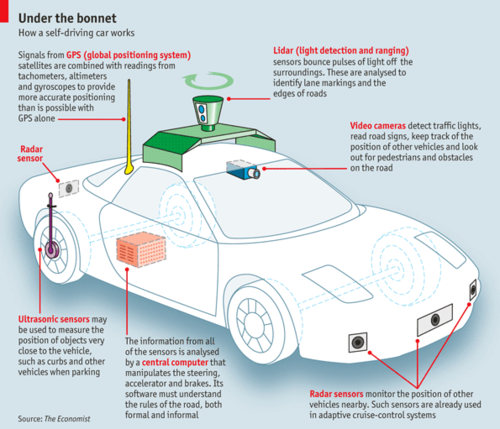 Google recently disclosed that about $150,000 of required equipment is necessary to support the self-driving, automated chauffeur function.
Google recently disclosed that about $150,000 of required equipment is necessary to support the self-driving, automated chauffeur function.(note: click the hint button again, to hide this hint & return to the quiz)
-
Question 10 of 10
10. Question
10 points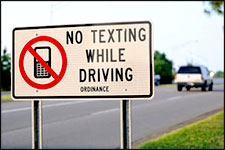 How many U.S. States & territories have passed legislation, and are now issuing some form of Robot-Driver License?Correct
How many U.S. States & territories have passed legislation, and are now issuing some form of Robot-Driver License?Correct
 In 2012, the State of Nevada was first to pass legislation that regulates & structures the parameters under which a robot driver’s license may be issued. Since then, the states of California, Florida, and the District of Columbia, have passed similar legislation, bringing the current total to (at least) four. There are 14 additional states (at least), including Michigan, that are currently exploring this opportunity, as well.
In 2012, the State of Nevada was first to pass legislation that regulates & structures the parameters under which a robot driver’s license may be issued. Since then, the states of California, Florida, and the District of Columbia, have passed similar legislation, bringing the current total to (at least) four. There are 14 additional states (at least), including Michigan, that are currently exploring this opportunity, as well.The Center for Internet and Society has coordinated a current (as of May 2013) listing of the States actively discussing policy in this arena.
Incorrect
 In 2012, the State of Nevada was first to pass legislation that regulates & structures the parameters under which a robot driver’s license may be issued. Since then, the states of California, Florida, and the District of Columbia, have passed similar legislation, bringing the current total to (at least) four. There are 14 additional states (at least), including Michigan, that are currently exploring this opportunity, as well.
In 2012, the State of Nevada was first to pass legislation that regulates & structures the parameters under which a robot driver’s license may be issued. Since then, the states of California, Florida, and the District of Columbia, have passed similar legislation, bringing the current total to (at least) four. There are 14 additional states (at least), including Michigan, that are currently exploring this opportunity, as well.The Center for Internet and Society has coordinated a current (as of May 2013) listing of the States actively discussing policy in this arena.
Hint
Things are changing very quickly in this emerging arena. Expect new developments to be announced with increasing speed. In the first half of 2012, Nevada became the first State to pass legislation that licenses robot drivers. Since then, multiple states, and the District of Columbia have followed suit. Review the Center for Internet and Society’s listing of active developments in this arena.
(note: click the hint button again, to hide this hint & return to the quiz)
